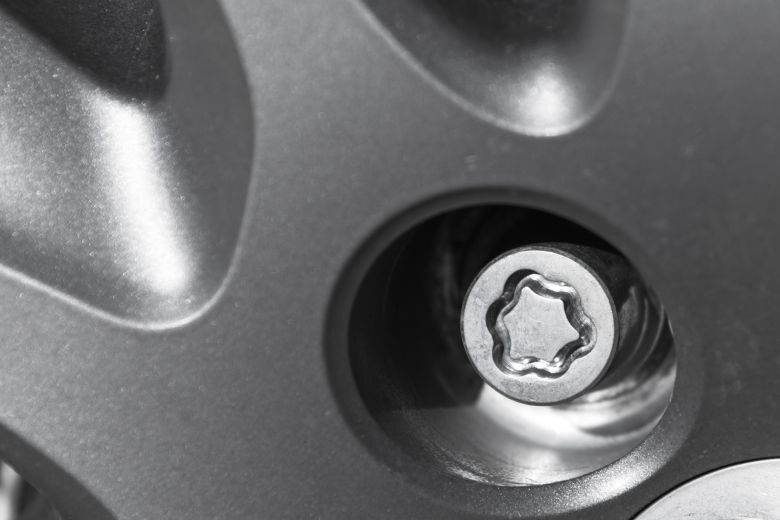These differ from standard wheel nuts as they have a different shape, pattern, or appearance.
In this know how guide, we look at everything to do with locking wheel nuts.
Locking wheel nut
A locking wheel nut is a tool that is used to secure the wheels of a car to prevent theft.
Unlike regular wheel nuts, each locking wheel nut has a unique pattern that requires a matching key to remove it from the wheel.
Without this key, it's very difficult to remove the wheel, which deters potential thieves. They are commonplace in modern vehicles and provide an extra bit of safety.
Typically, each of the four wheels has a single locking nut among the regular nuts (anywhere from six to ten – although this can be a lot more).
The key is provided when you buy the car.
It is important that the owner keeps it in a safe place, as losing it can make tyre changes or regular maintenance difficult.
If you ever need to buy new tyres or repair a tyre, the locking nut key will be needed by the mechanic to loosen the wheel.
Where to find your locking wheel nut?
If you’re looking for the locking wheel nut key, here are some common places to leave it where it is safe and can be easily accessed.
Many people keep the key in the glove box for easy access and is unlikely to be clogged up with many other items.
Most vehicles will have a side compartment in the boot where emergency breakdown kits, first aid kits, and even the locking wheel nut can be stored.
Another useful place where you can store and find your locking wheel nut when needed is in the centre console.
When should your locking wheel nuts be checked?
A locking wheel nut should be checked by a mechanic at a trusted local mechanic during a car service and during other routine maintenance or tyre-related services.
This means it should be checked every 6,000 to 12,000 miles – or at least once a year. This could be more often if the driver travels more.
Also, any time a tyre is replaced, repaired, or removed, the locking nut and key should be inspected for wear or damage.
By carrying out frequent checks, it ensures that the nut isn’t corroded, or at risk of getting stuck, which could cause issues if you need to remove the wheel in an emergency.
This can end up being a more costly repair, so it is important to stay on top of this throughout the year.
How to remove a locking wheel nut
Removing a locking wheel nut requires the specific key designed for it, which should be provided by the manufacturer if it is a new vehicle – or by the dealership/previous owner if it is second-hand.
Once you or the mechanic have found the key place it onto the locking nut, ensuring it fits snugly into the unique pattern.
Next, attach a spanner to the key, apply pressure and turn counterclockwise.
The locking nut should loosen, allowing you to remove it.
Reverse this guide to reattach the wheel.
How to remove a locking wheel nut without a key
If you have lost the key linked to the locking wheel nut, then don’t panic – there are some steps you can take.
The first step you can take is to contact the dealership that sold you the vehicle – or the local office for the manufacturer.
They can often provide a replacement based on your car’s model and locking nut code (or other details associated with the vehicle).
This will likely come at a cost, which can vary on a variety of reasons.
Alternatively, you can visit or mechanic or tyre specialist. This is because they will likely have special tools for removing locking nuts without a key.
Service, repair or MOT?
You can trust the RAC with our local approved garages and NEW mobile mechanics.












